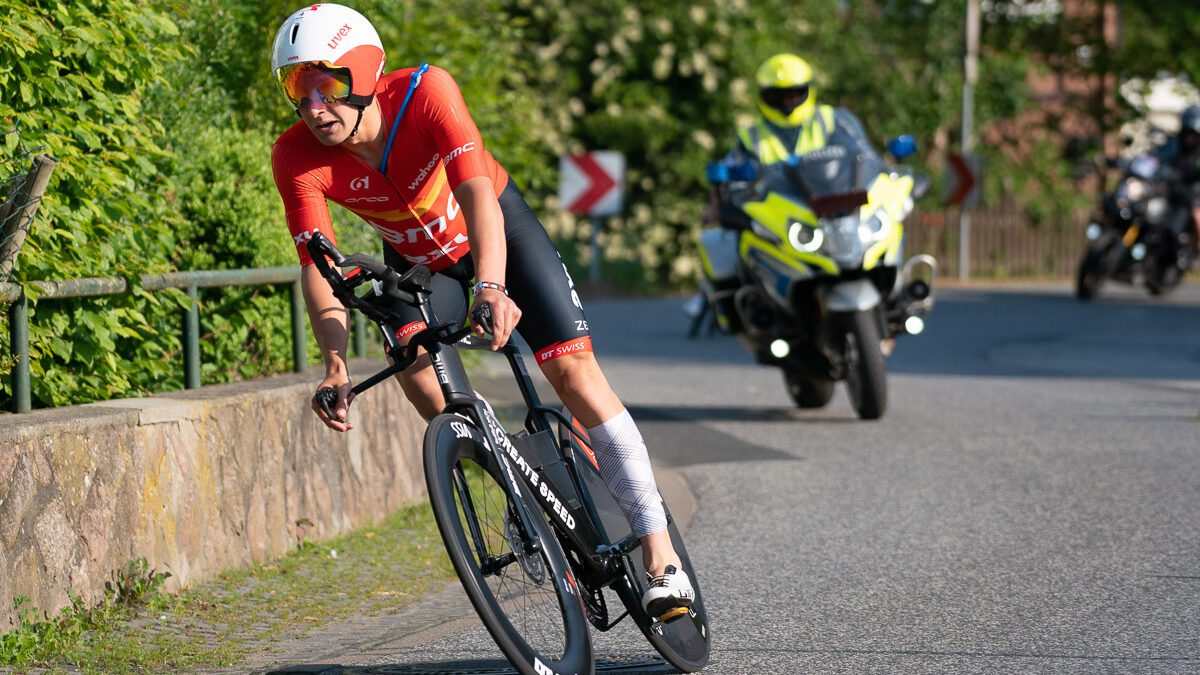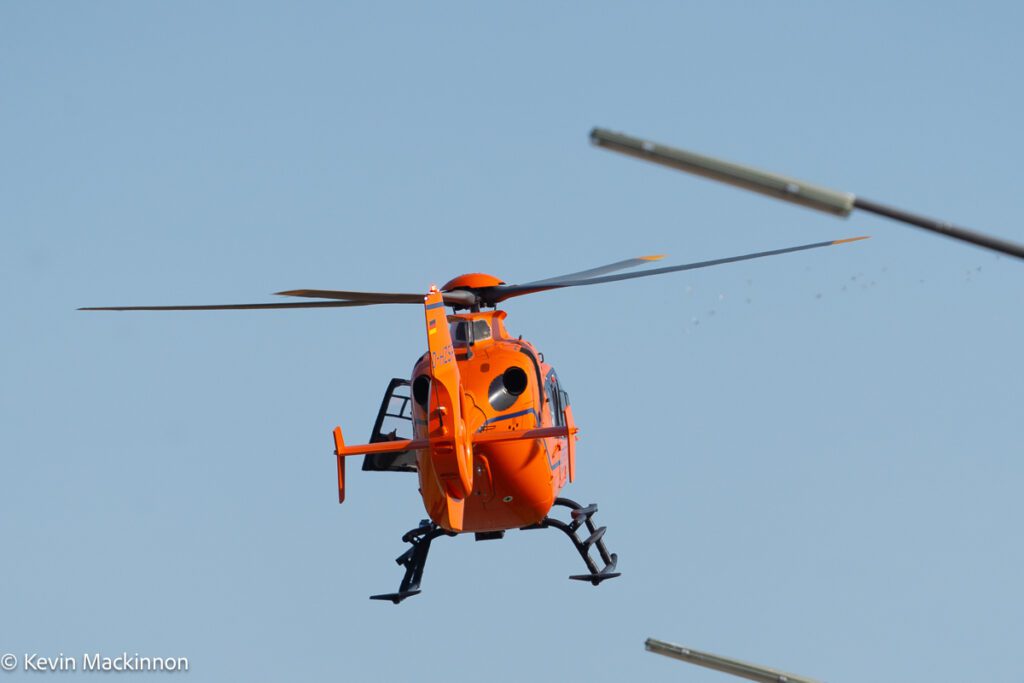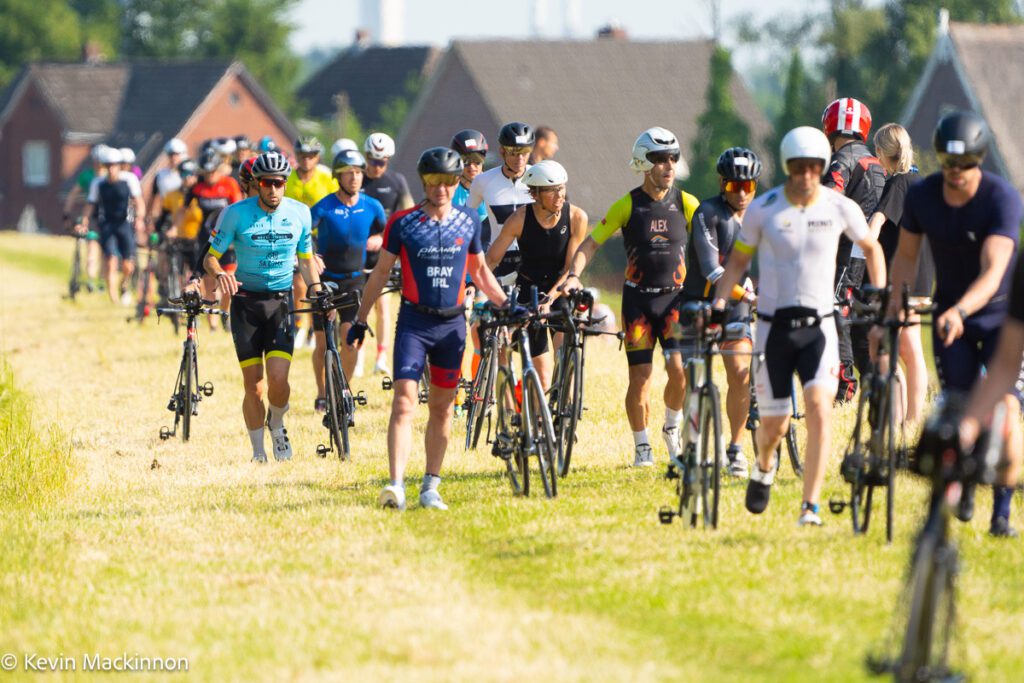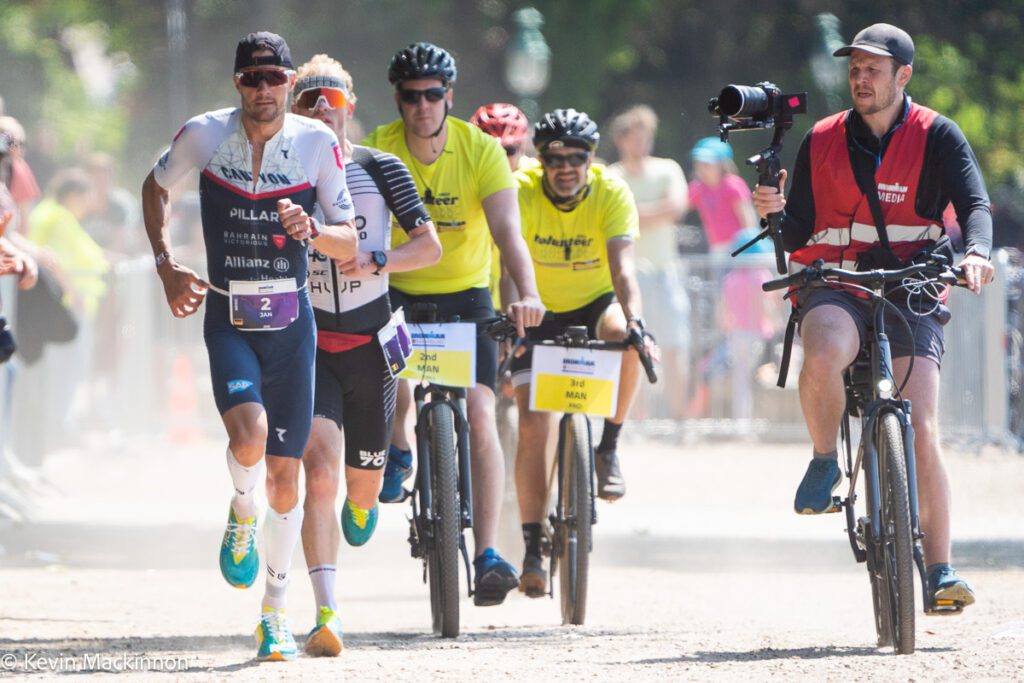Ironman CEO: “To keep the broadcast going was a mistake.”
We catch up with Andrew Messick for some follow up and insights into Sunday's tragic events at the Ironman European Championship Hamburg
 Photo by:
Kevin Mackinnon
Photo by:
Kevin Mackinnon
As someone who was on the scene of the crash at the Ironman European Championship in Hamburg last Sunday, it’s been an emotional few days as I try to process the terrible tragedy that took the life of a volunteer motorcycle driver and injured a cameraman and an athlete. While I wasn’t in the group at the time of the crash, I was on the scene a few minutes later, and watched the victims be cared for and transported to hospital.
The tragedy has led to lots of comments and coverage from many in the sport, much of it critical of Ironman. Make no mistake – there were issues at the event that were evident to many of us who were on motorcycles trying to cover the event almost as soon as we got out on the bike course. Many of the protocols that Ironman follows at other events (especially here in North America) weren’t happening out on the course – most importantly any sort of marshalling of the motorcycles around the lead group and communication between the drivers. Add that to a course with narrow roads and two-way traffic, and the potential for an accident like the one we saw increases.

It’s important, though, to provide some context around the events, and to find out the reasoning behind some of the decisions that were made last Sunday. We caught up with Ironman CEO Andrew Messick today to follow up on some of the issues that have generated the most criticism. As always, Messick provided some frank insights, and was willing to admit to mistakes Ironman made on the day.
Ironically, Messick himself was part of the misinformation published since Sunday’s race – it has been reported that he was at the finish line. In fact he was at home in California.
Messick also told us that an investigation into the incident is underway, and “Ironman is participating in that as much as German authorities will allow.”
Motorcycle operator dead after accident at Ironman European Championship in Hamburg
The Broadcast
The accident was seen during the live broadcast of the race. The German coverage of the event, co-hosted by Sebastian Kienle, was stopped almost immediately. The Ironman coverage on FaceBook live continued.
“I want to acknowledge that we’ve never had that before – a critical incident on a live broadcast,” Messick said. “I think we didn’t get the broadcast right, for sure. If I had to do it again, I would have turned off the broadcast and not put Welchie (host Greg Welch) and the team in the position to talk about sunshine when everyone had seen what happened. To keep the broadcast going was a mistake. We have to own that.”
Why wasn’t the race stopped?
“The team on the ground felt that the conditions that it was safe to continue the race,” Messick said of the decision to keep the race going. “That was a better alternative, and safer alternative, than stopping the race.”
The decision to continue was made also made in consultation with local authorities. Messick points out that with 2,000 athletes on the course, many who speak different languages, it was important to get them back to transition safely.
“In our view it was safer to let them finish,” he continued.

Communication
As noted earlier, Messick believes that the broadcast should have stopped. There’s been lots of criticism that Ironman didn’t make any statements about the event until far too late. Ironman did make a communication through the live broadcast and onsite some time between 60 and 90 minutes after the incident took place “acknowledging what occurred, that those involved were receiving medical attention, and that [they] were working through the situation with local authorities.”
Messick pointed out that Ironman’s incident protocol is coordinated with media and race, city and government officials for a reason: “We don’t want people (family members) to find something out from a broadcast or a tweet.”
After the first, general announcement, “once we had confirmation from the German authorities that the motorcycle operator’s closest family had been notified, we were then able to proceed with a more detailed statement,” according to an official statement from Ironman. “It was crucial that we respected the legalities of the situation and we got the facts straight about the incident before we released any detailed statement to avoid speculation or the wrong information getting to family and friends of those impacted.”
Motorcycle plan
While I, and the rest of the photographers and other media who were on the motorcycles didn’t attend a motorcycle meeting, the drivers did, Messick said. Before the race, officials were confident that the course was safe and could accommodate the media trying to cover the race.
“Was the process we had in place in Hamburg good enough?” Messick asked. “We wouldn’t have the race take place if we didn’t think things were safe.”
Those of us who were out on the course and witnessed things, though, would argue that the process in place wasn’t good enough. Many of us were on bikes with drivers who had never done this before. Before the fatal accident, two motorcycles carrying still photographers collided, with one going down.
The congestion was the result of the narrow roads that made it extremely difficult to move ahead of the leaders, which meant that the bikes were forced to ride in line either next to, or slightly behind the lead group of riders. Many of us didn’t want to be anywhere near the front group – our goal was to simply get ahead so we could get off and take photos from the side of the road as the athletes went by.
In terms of the number of motorcycles out there, it’s obvious that there were too many, certainly on that part of the course. Ironman can’t win when it comes to providing motorcycles at events, though. “Media” requests have gone through the roof over the last few years, with sponsors, influencers, coaches, agents and a host of others clamouring to get out on the course to do coverage. Having witnessed the media folks at Ironman races get berated for not providing motorcycle access, it’s easy to see why, when the event can get lots of motorcycles, they’d look to use those and reduce the headache of getting yelled at.
Jan Frodeno reflects on tough day at the Ironman European Championship in Hamburg

Lessons moving forward
“There are three big things,” Messick said when asked what are some of the key takeaways from Sunday’s accident.
“Making sure that we have the right plan in place for the front of the race,” Messick said. “That plan needs to acknowledge that if we’re successful at what we’re trying to do, there is going to be more demand for motos, and we need to be really thoughtful about that. If we’re able to generate the interest that we want, we need to be able to manage it.”
“We need to look at our courses,” he continued. “We need to be more thoughtful about what the requirements are for certain kinds of races. It’s time for us to take a really hard look at looped courses, out and backs – what are the physical characteristics of races, especially championship events.”
“We have a critical incident protocol for operations,” Messick concluded. “We don’t have that yet for the broadcast. We need that.”
